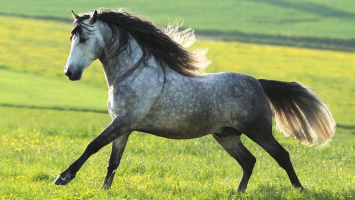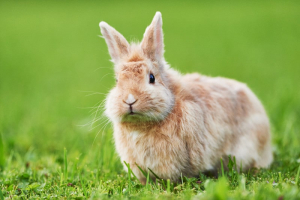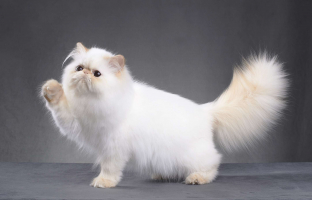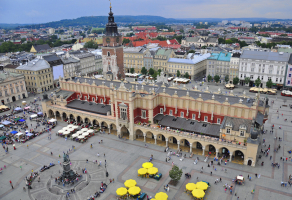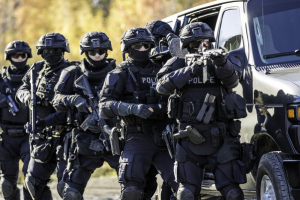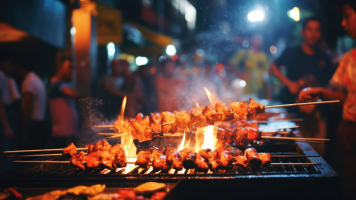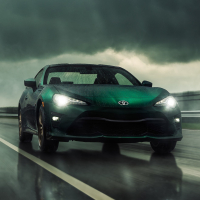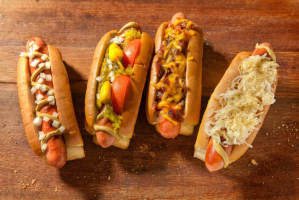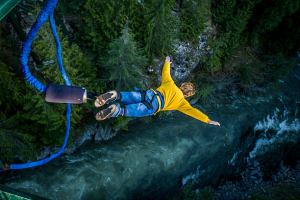Top 9 Most Popular Police Dog Breeds In The World
The dog is a pet that is very close to humans. It is not only an animal but it is also a friend of man. Some dog breeds are also impressed by their physical ... read more...beauty, personality, and intelligence. Let's find out the most popular police dog breeds in the world with Toplist!
-
One of the most popular police dog breeds in the world is the German Shepherd, also known as the Alsatian, is a medium to large-sized German working dog breed. Max von Stephanitz created the breed in 1899 using various traditional German herding dogs.
It was developed as a herding dog to herd sheep. It has since been used in a variety of other fields, including disability assistance, search-and-rescue, law enforcement, and warfare. It is commonly kept as a companion dog and had the second-highest number of annual registrations in 2013, according to the Fédération Cynologique Internationale.
German Shepherds were specifically bred to be intelligent. Stanley Coren ranked the breed second on a list of breeds most likely to bark as watchdogs. This trait, combined with their strength, makes the breed desirable as police, guard, and search and rescue dogs, as they can quickly learn new tasks and interpret instructions better than other breeds.
German Shepherds are moderately active dogs who are described as confident in breed standards. The breed is distinguished by a willingness to learn and a desire to have a purpose. They are inquisitive, which makes them excellent guard dogs and search dogs. They can become overly protective of their family and territory, especially if they are not properly socialized.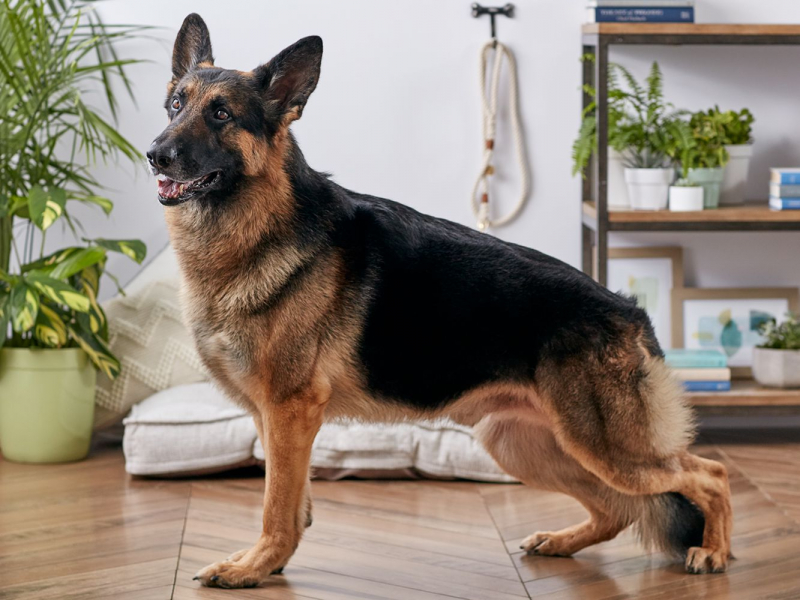
Photo: thesprucepets.com 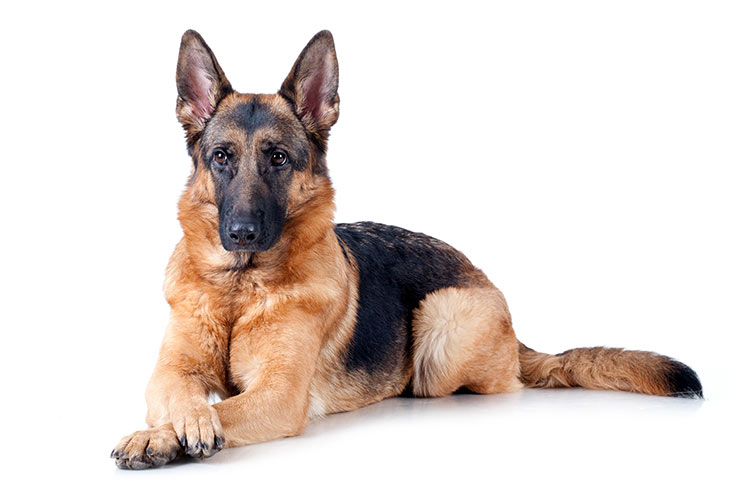
Photo: akc.org -
The Rottweiler is a medium-to-large or large breed of domestic dog. Because their primary function was to herd livestock and pull carts laden with butchered meat to market, the dogs were known in German as Rottweiler Metzgerhund, or Rottweil butchers' dogs. This practice lasted until the mid-nineteenth century when railways replaced droving. Rottweilers are still used to herd livestock in many parts of the world, but they are also used as search and rescue dogs, guard dogs, and police dogs.
The Rottweiler is one of the oldest dog breeds, according to the FCI Standard. Its origins can be traced back to Roman times. These dogs were used as herders or as driving dogs. They marched with the Roman legions over the Alps, protecting the people and driving their cattle. In the Rottweil region, these dogs met and mixed with the indigenous dogs in a natural crossing. The main task of the Rottweiler was now to drive and guard cattle herds, as well as to defend their masters and their property. This breed was named after the old free city of Rottweil, where it was known as the "Rottweil butcher's dog". Butchers bred this type of dog solely for performance and utility.
Rottweilers are a powerful breed with strong herding and guarding instincts. Rottweiler potentially dangerous behavior is usually the result of irresponsible ownership, abuse, neglect, or a lack of socialization and training. However, Rottweiler's exceptional strength is an additional risk factor that should not be overlooked. As a result, breed experts agree that formal training and extensive socialization are required for all Rottweilers. According to the AKC, Rottweilers love their owners and may act clownishly toward family and friends, but they are also territorial and will not welcome strangers until properly introduced. Training in obedience and socialization is required.
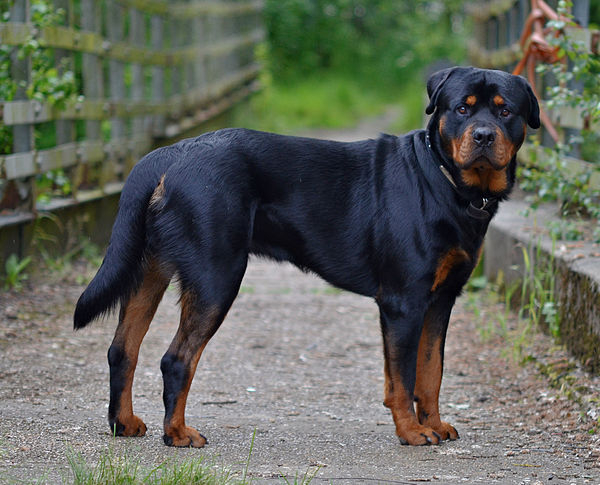
Photo: wikipedia 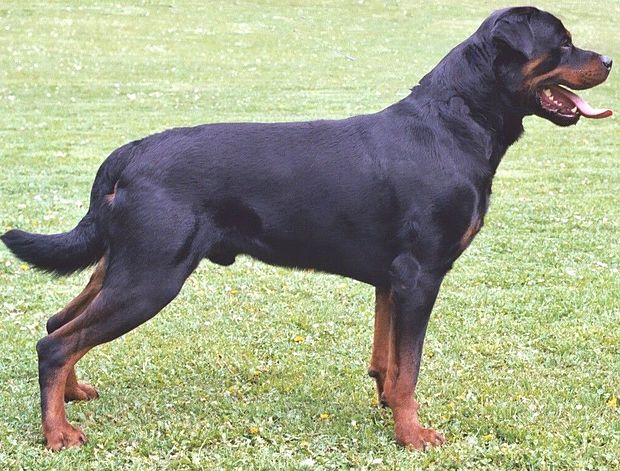
Photo: wikipedia -
The next position on the list of the most popular police dog breeds in the world is the Belgian Tervurens which have a thick double coat that consists of a long, straight outer coat and a dense undercoat. The fur is slightly rough to the touch, but not excessively so. Extra hair around the neck, especially on men, forms a 'collarette.' Hair grows shorter on the front of the legs and on the face than on the rest of the body, and a long fringe grows on the back of the legs and on the tail. The coat is two-toned, with fawn or mahogany hairs blackened at the tips. The chest is usually black, and the face is hidden behind a black mask. The hair on the underside of the tail, body, and hind legs lightens to a cream or light gray color.
Belgian Tervuren are intelligent and obedient dogs with strong territorial and protective instincts. Some people are shy and sensitive. This breed must be socialized and trained from a young age. They dislike being taught harshly because it makes them appear uncooperative. Because of their protective instincts, they must be socialized at a young age.
They are appropriate for a wide range of jobs and competitions. Can be a police or guard dog, as well as a family pet. If they get along well, they are good with children. They dislike being confined in cages. If they are left out or feel uncared for, they will devise amusing tricks to attract the attention of their owners.
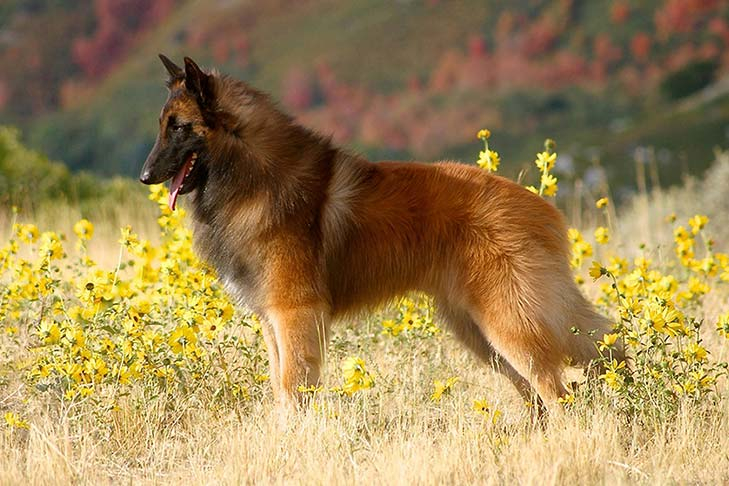
Photo: akc.org 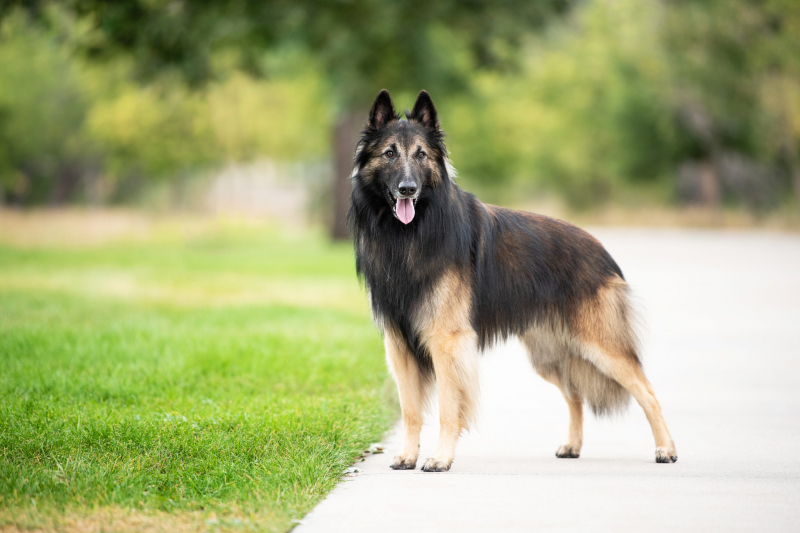
Photo: tythedogguy.com -
The Dobermann, also known as the Doberman Pinscher in the United States and Canada, is a medium-large breed of domestic dog that was developed around 1890 by Louis Dobermann, a German tax collector. The muzzle of the Dobermann is quite long. It usually walks on its pads and is not heavy-footed. They should walk with an even and graceful gait. The ears are traditionally cropped and posted, and the tail is docked. However, in some countries, these procedures are now illegal, and they are frequently regarded as cruel and unnecessary. Dobermanns are distinguished by markings on the chest, paws/legs, muzzle, above the eyes, and beneath the tail.
Dobermanns are intelligent, alert, and fiercely loyal companions and guard dogs. Personality varies greatly between individuals, but if properly cared for and trained, they are generally regarded as loving and devoted companions. The Dobermann is determined, strong, and occasionally stubborn. They are easy to train and learn quickly if you use a consistent approach.
The Dobermann had to be large and intimidating as a personal protection dog, fearless and willing to defend its owner from attackers (especially other guard dogs), but obedient and restrained enough to do so only on command. These characteristics suited the dog well as a personal defense dog, police dog, or war dog, but not so well as a companion. However, modern breeders have reduced the aggressiveness of the Dobermann over the years.
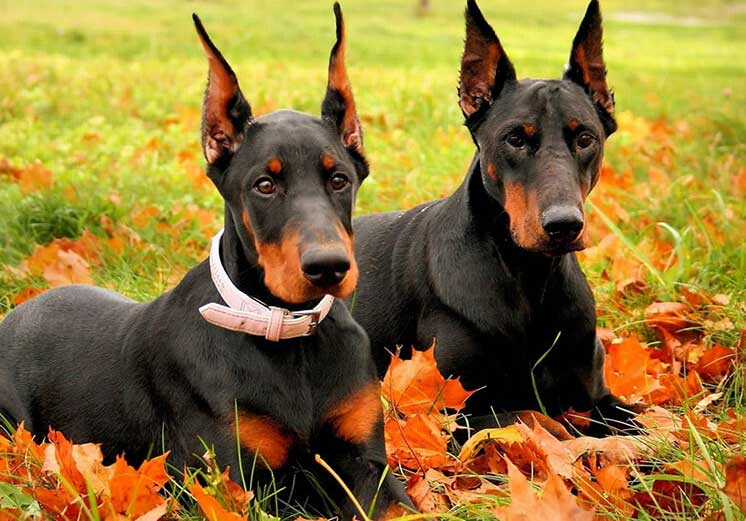
Photo: wikipet.vn 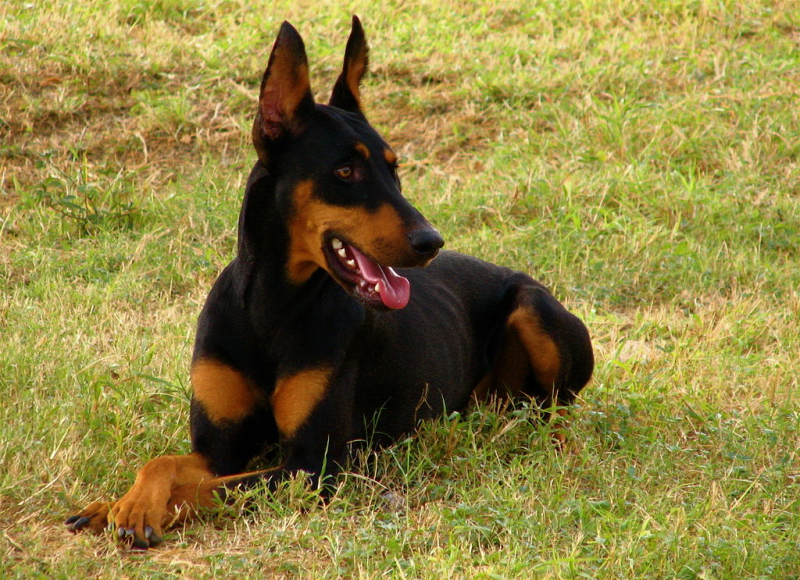
Photo: wikimedia commons -
The Dutch Shepherd is a herding dog from the Netherlands. Shepherds and farmers used them because they needed a versatile dog with few demands and the ability to adapt to a harsh and meager existence.
Originally, the Dutch Shepherd's primary function in the countryside was that of a shepherd's dog. The Dutch had an arable culture that was sustained by flocks of sheep since ancient times. The dogs had to keep the flock at bay and keep the flock away from the crops, which they accomplished by patrolling the road and field borders. They also accompanied the flocks as they traveled to common pastures, markets, and ports.
They kept the hens away from the kitchen garden, herded the cows for milking, and pulled the milk carts at the farm. When strangers entered the farmyard, they also alerted the farmers. Sheep flocks had almost entirely vanished in the Netherlands by 1900. The Dutch Shepherds' adaptability made them ideal for dog training, which was gaining popularity at the time. They were then trained and used as police dogs, search and rescue dogs, and blind guide dogs. They can, however, continue to herd sheep.
Dutch Shepherds are devoted, dependable, alert, watchful, active, self-sufficient, intelligent, and intuitive. Obedience and discipline can produce remarkable results. They have a true shepherding temperament and can work well with their owners as well as deal with any task that is assigned to them without being aggressive or shy. They have a strong personality and independence inherited from their herding ancestors.
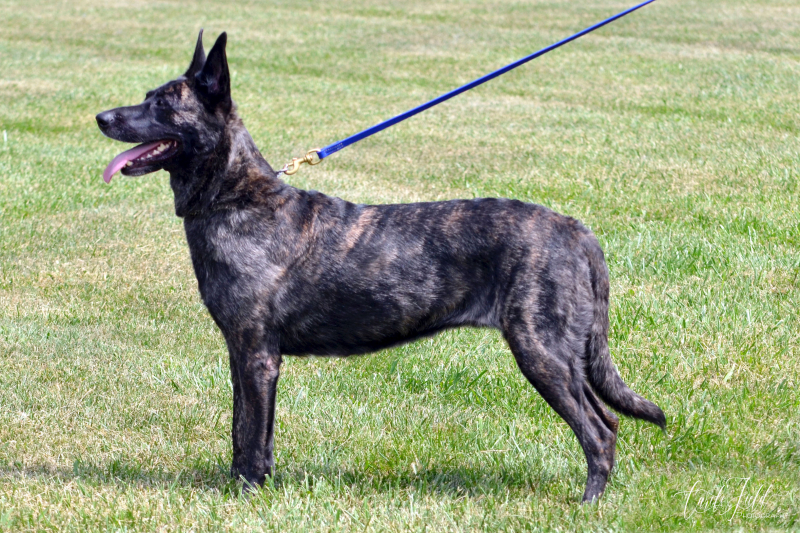
Photo: wikipedia 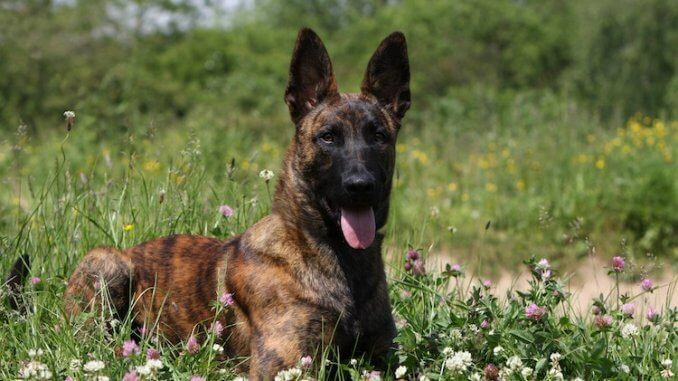
Photo: wikipedia -
One of the most popular police dog breeds in the world is the Labrador Retriever, also known as the Labrador, is a British retriever gun dog breed. It was named after the Labrador region of the colony of Newfoundland (now a province of Canada) and was developed in the United Kingdom from fishing dogs imported from that colony. It is one of the most popular breeds of dog in many countries, particularly in the Western world.
The Labrador is a dog that is loyal, obedient, and playful. It was originally bred as a sporting and hunting dog, but it is now commonly kept as a companion dog. It can also be trained to be a guide or assistance dog, as well as for rescue and therapy work.
Labrador Retrievers have a high success rate in becoming guide dogs. A recent study looked at how well four different breeds (Labrador Retrievers, Golden Retrievers, Labrador Retriever/Golden Retriever Mixes, and German Shepherds) trained to be guide dogs. Labradors are strong and indefatigable swimmers known for their ability to withstand cold water for extended periods of time. Their ability to work quietly alongside hunters while watching for birds to fall from the sky, marking where they land, and then using their exceptional nose to find and retrieve dead or injured birds has elevated them to the throne of waterfowl retrievers.
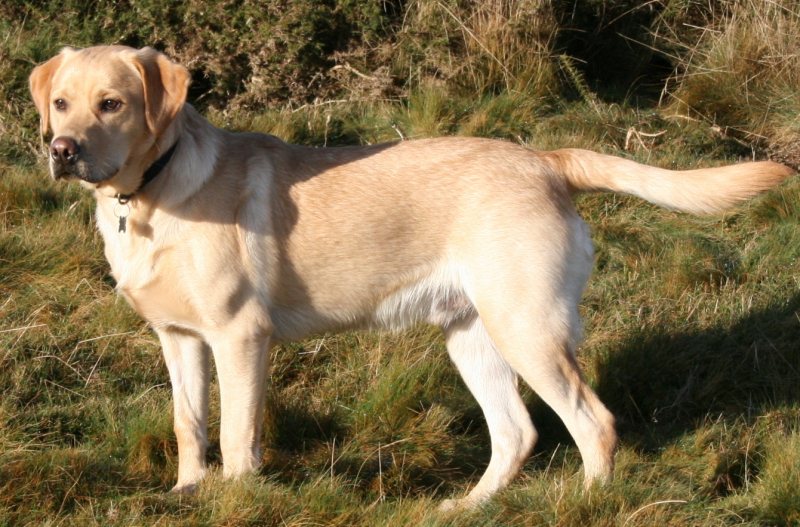
Photo: wikipedia 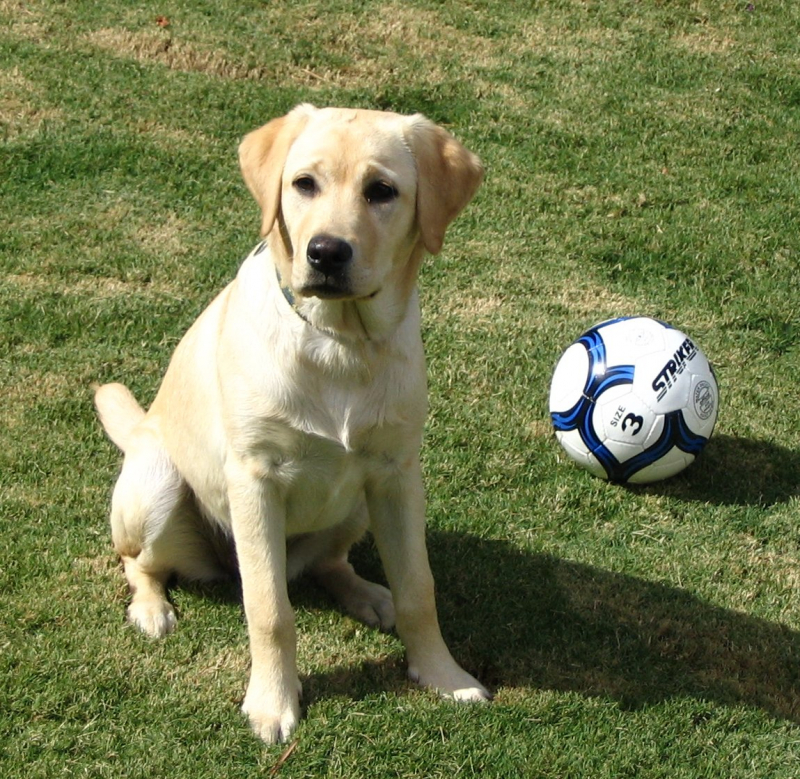
Photo: simple.wikipedia.org -
The next position on the list of the most popular police dog breeds in the world is the Boxer dog which is a medium to the large, short-haired mastiff-type dog breed that originated in Germany. The coat is smooth and snug; colors include fawn, brindled, or white, with or without white markings. Boxers have brachycephalic skulls (broad, short skulls), a square muzzle, mandibular prognathism (underbite), very strong jaws, and a powerful bite that allows them to hang on to large prey. The Boxer was bred from the Old English Bulldog and the now-extinct Bullenbeisser, which went extinct due to crossbreeding rather than breed decadence. Both The Kennel Club and the American Kennel Club (AKC) Working Group recognize the Boxer.
The Boxer's most distinguishing feature is its head. The breed standard requires that it be in perfect proportion to the body and that it never be too light. The greatest emphasis should be placed on the muzzle's correct form and absolute proportion to the skull. The ratio of the length of the muzzle to the length of the head should be 1:3.
Boxers are a bright, energetic, and playful breed that gets along well with children. They are patient and playful with children while also being protective, making them a popular choice for families. They are active, strong dogs who require regular exercise to avoid boredom-related behaviors like chewing, digging, or licking. Boxers have a reputation for being "headstrong," which can be attributed to improper obedience training.
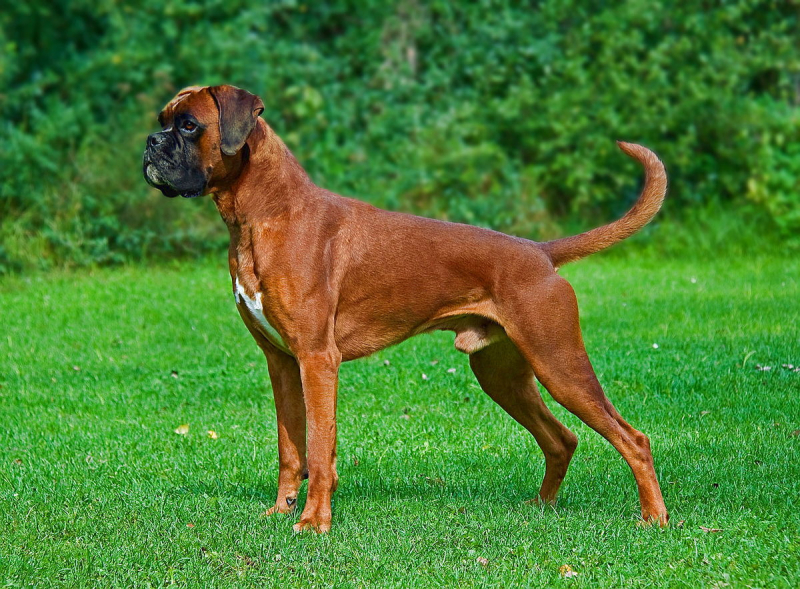
Photo: wikipedia 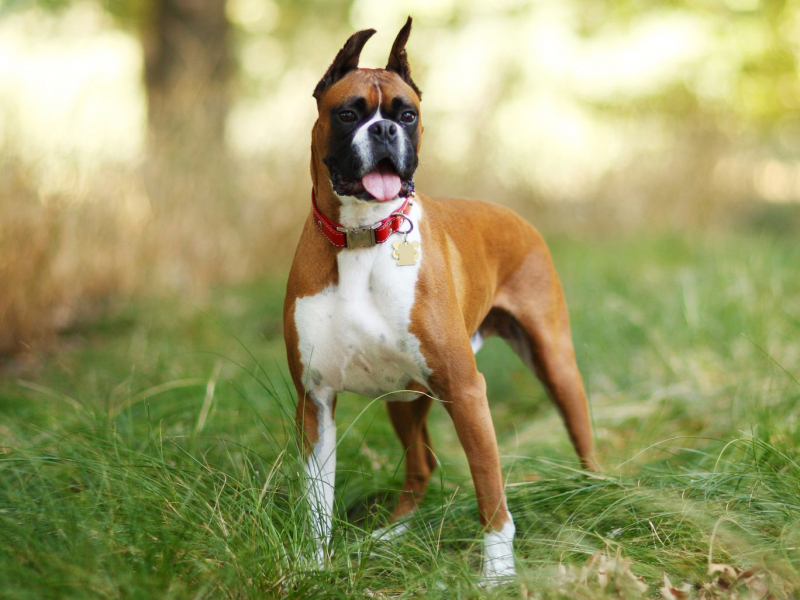
Photo: thesprucepets.com -
The bloodhound is a large scent hound that was originally bred to hunt deer, wild boar, and, since the Middle Ages, people. It is thought to be descended from hounds once kept at the Abbey of Saint-Hubert in Belgium and is known in French as le chien de Saint-Hubert.
This breed is well-known for its ability to detect human scents over long distances, even days later. Its exceptional sense of smell is combined with a strong and tenacious tracking instinct, resulting in the ideal scent hound, which is used by police and law enforcement around the world to track escaped prisoners, missing people, and lost pets.
Bloodhounds range in weight from 36 to 72 kg. At the withers, they stand 58 to 69 cm tall. Conformation judges prefer larger dogs, according to the AKC standard for the breed. Black, liver, and red are acceptable bloodhound colors. Bloodhounds have an unusually large skeleton, with the majority of their weight concentrated in their bones, which are unusually thick for their length. The coat of a scent hound is hard and made entirely of fur, with no hair admixture.
When following a scent, this breed is gentle and tireless. Because of its strong tracking instinct, it can be stubborn and difficult to train and handle on a leash. Bloodhounds are affectionate and patient with humans, making them excellent family pets.
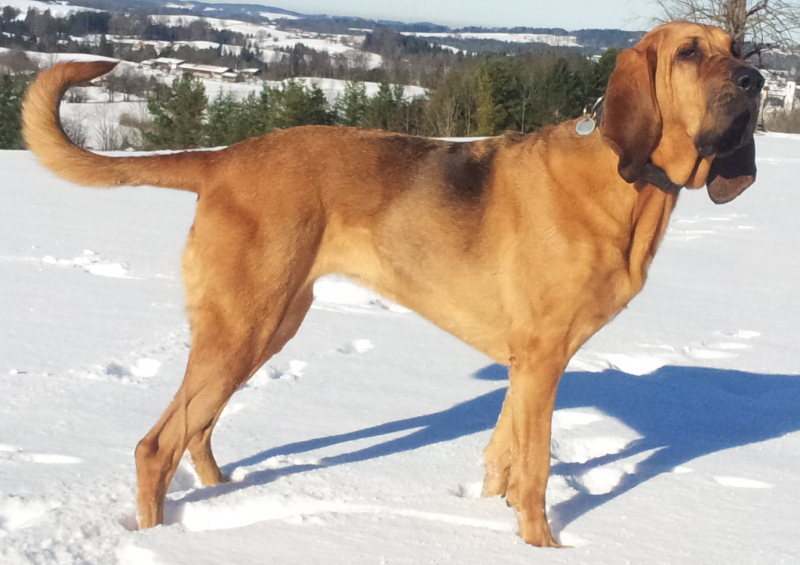
Photo: wikipedia.org 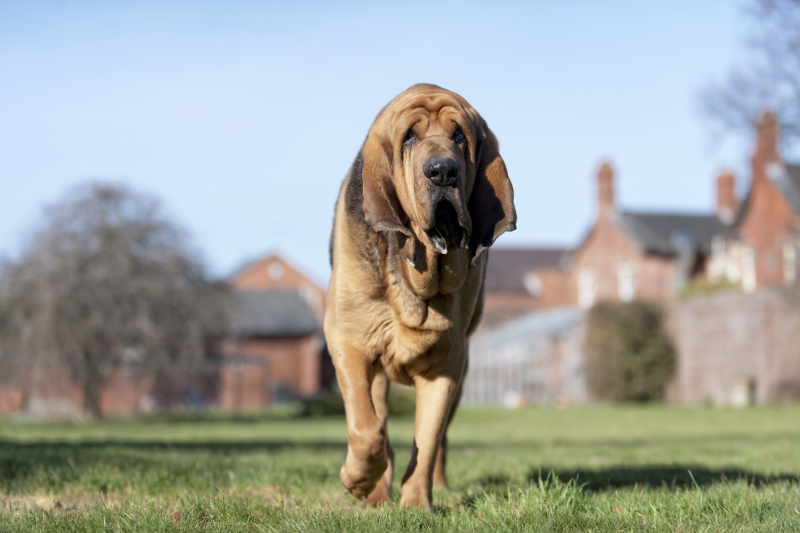
Photo: dogs.lovetoknow.com -
The Giant Schnauzer is a dog breed that originated in Germany in the 17th century. It is the largest of the three Schnauzer breeds, the other two being the Standard Schnauzer and the Miniature Schnauzer. It was developed using a variety of breeds, including the black Great Dane, the Bouvier des Flandres, and the German Pinscher. Originally bred to help farmers by driving livestock to market and guarding the farmer's property, the breed eventually moved to the city, where it worked as a security guard for breweries, butcher shops, stockyards, and factories. Outside of Bavaria, it was unknown until it became popular as a military dog during World Wars I and II.
Giant Schnauzers are typically a calm breed. The Giant Schnauzer is naturally suspicious of strangers and can be very territorial due to its breeding. It is usually accepting of new people or situations once introduced.
Giant Schnauzers have been described as dependable around children. They are extremely intelligent but easily bored. They are also extremely energetic and spirited, which, when combined with boredom, can lead to undesirable and destructive behavior. They are easy to train and devoted to their owner. They are known to become extremely attached to their owners. Some breeders believe that pepper and salt Giant Schnauzers are more docile than black-furred Giant Schnauzers.
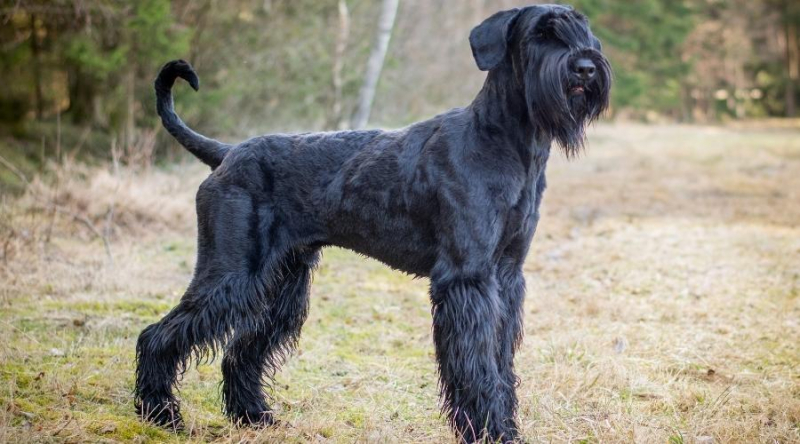
Photo: chocung.net 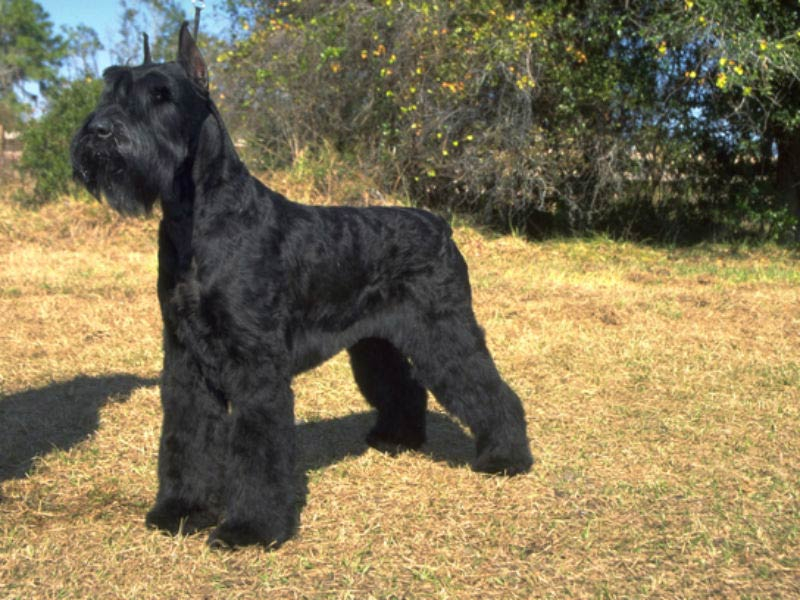
Photo: dogproductpicker.com











